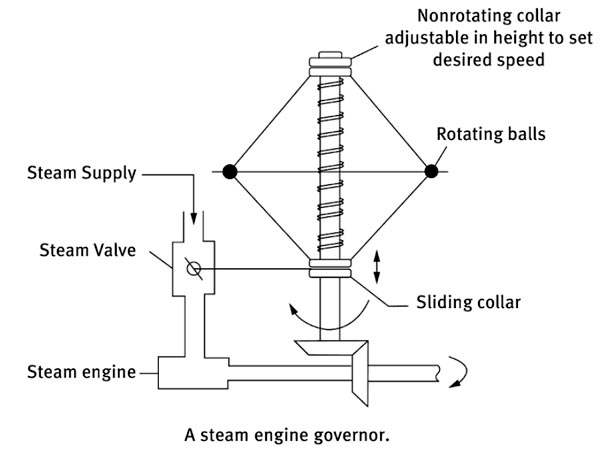The speed of locomotive is controlled by
Right Answer is:
Regulating steam flow to the engine
SOLUTION
Prior to 1788, the speed of the steam engine was manually controlled. The worker read speed on the indicator and increased or decreased the steam flow by setting the steam flow valve. The process of manual control could be divided into two steps:
1. Observe the current speed, and then compare the actual speed and the desired speed
2. Set steam flow valve according to the speed error E.
(I) If E is positive (which means the actual speed is lower than the desired), set the flow valve to increase the steam flow rate; the aim is to increase the actual speed.
(II) If E is negative (which means the actual speed is higher than the desired), the steam flow rate should be reduced.
The earliest significant work in modern automatic control can be traced to James Watt’s design of the fly-ball governor (1788) for the speed control of a steam engine. This device served to keep the speed of the engine at a selectable level regardless of the load by controlling the volume of steam available to the piston during each revolution.
There is the combustion chamber where the fuel is burned, producing steam in the boiler, which through its pressure and expansion drives the crank and slider mechanism that turns the wheels. There are also Watt’s governors as shown in Fig.

The engine speed was monitored by the “lift” of rotating balls that worked against a spring. The initial tension of the spring was the reference, which was determined by the desired speed. As the rotating balls rose or fell, the steam control valve closed or opened via mechanical linkage in such a sense as to compensate for the speed change. Obviously, the automatic control process was similar to that of manual control. However, the difference in an automatic control process was that the observing, comparing, and setting (for the automatic control process) were performed by the controller automatically. Hence, an important conclusion that could be drawn is that the automatic control process, in fact, includes measuring errors of the controlled variables and correcting or diminishing them automatically (according to the errors).
This device opens or closes the steam supply according to the actual wheel speed, too fast and the steam supply is throttled, too slow and the steam supply is opened up. It ensures that the locomotive runs at a nearly constant speed.
